You can’t deny that the holiday season is one of the most joyous times of the year. With so many people prioritizing quality time with family and embracing the festive spirit, it’s nearly impossible not to relish in the season’s comforts. However, a common no-no among all the merriment is indulging in many high-calorie, decadent foods and beverages that can stunt the progress you’ve made with your health and fitness throughout the year. By no means should you feel discouraged from enjoying your favorite holiday treats, but indulging in moderation and knowing which foods to limit or avoid are critical steps to take to avoid inflicting too much harm on your health. To learn more, we chatted with Blanca Garcia, RDN, a registered dietitian nutritionist at Blanca Garcia Consulting, who dishes out nuggets of wisdom on the worst holiday foods giving you a Santa belly.
A review of several studies published in the Journal of Obesity found that the holiday season, which kicks off the final week of November and ends the first week of January, is associated with significant weight gain in adults. On average, the studies found that adults consistently gained between 0.4 to 0.9 kilograms (1 to 2 pounds) during the festive season. Interestingly, the researchers noted that even those who were actively trying to lose weight experienced weight gain over the holidays.
If you want to find out the treats to avoid this season, we have you covered. Here are Garcia’s five worst holiday foods most likely to give you a dreaded Santa belly. And next up, don’t miss The Best Exercises To Get Rid of Holiday Weight Fast, Expert Says.
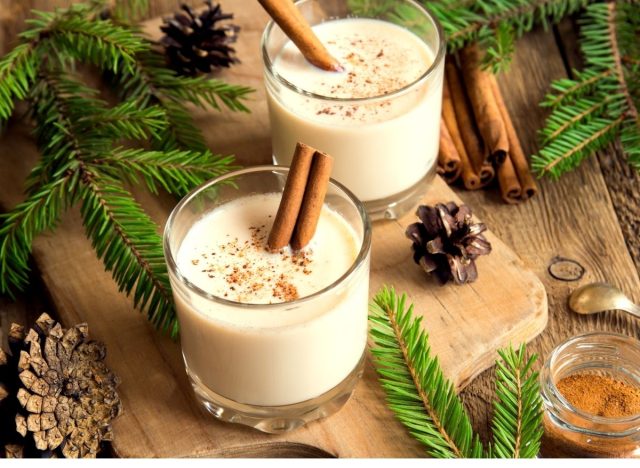

First up on our list of the worst holiday foods that are increasing your waistline is eggnog. While eggnog is a tasty tradition enjoyed by many people every year, it delivers a high dose of calories that can contribute to weight gain. “A single cup of eggnog contains between 250 to 300 calories, nearly the same as an entire snack,” says Garcia. “This beverage contains eggs, cream, sugar, alcohol, spices, vanilla, nutmeg, and cloves. Eggnog can contribute to belly fat because its ingredients are high in sugar and very little fiber to counter the sugar absorption.”
Try limiting your eggnog consumption to one cup a day (or even less) over the holidays, since two or more equals an entire meal in terms of calories.
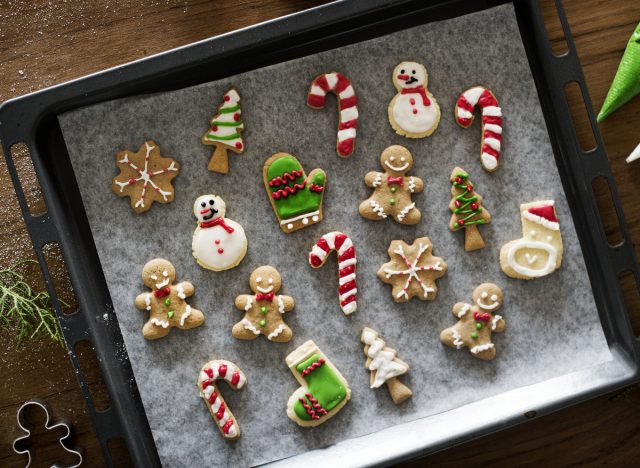

If you’re anything like me, the holiday season transforms you into a real-life Cookie Monster. (“Me want cookie!”) Unfortunately, this indulgence doesn’t do your waistline any favors. After all, how do you think Santa got his belly in the first place?
“Holiday cookies, though fun to eat, can significantly contribute to belly fat,” Garcia warns. “The refined sugar in the cookies can create excess sugar in the blood. When there’s too much sugar in your blood, your body transfers it to the liver where it gets converted and stored as fat.”
READ RELATED: Walking for Weight Loss? Follow This Daily Routine Trainers Swear By
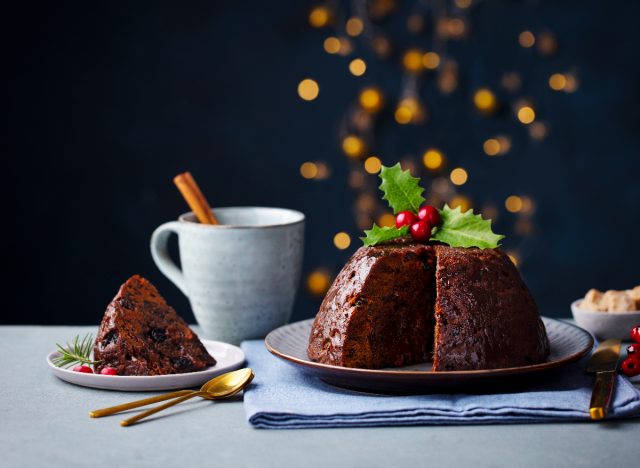

Who doesn’t love indulging in a decadent pudding after Christmas dinner? While it’s hard to resist the temptation, doing so can help prevent weight gain over the holidays.
“Typically, the ingredients in Christmas puddings are flour, breadcrumbs, sugar, butter, and brandy butter. The brandy butter contains butter, icing sugar, and a lot of extra calories. This dessert can certainly pack on calories and should be enjoyed in moderation,” advises Garcia.
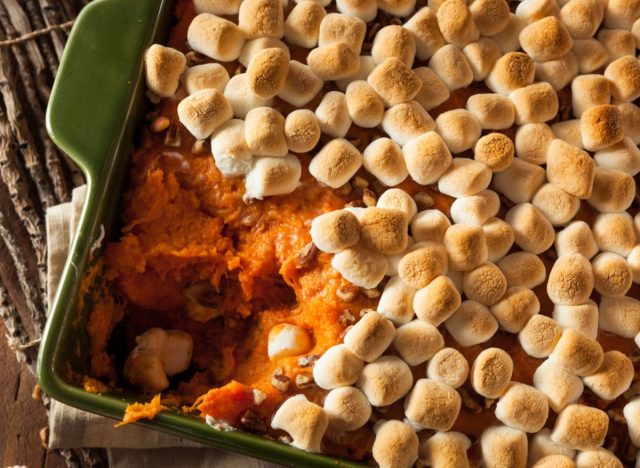

Casserole is a holiday classic that’s easy to make and even more enjoyable to eat. Plus, you can feed a large gathering without too much extra effort. However, the calories can add up quickly in most casserole recipes.
“Depending on the recipe, common casserole ingredients may include calorie-dense foods like sweet potatoes, butter, sugar, and marshmallows. Talk about carbs on carbs,” says Garcia. To avoid adding belly fat to your beltline, consider having a small serving of casserole and adding more veggies to your plate for a healthy balance.
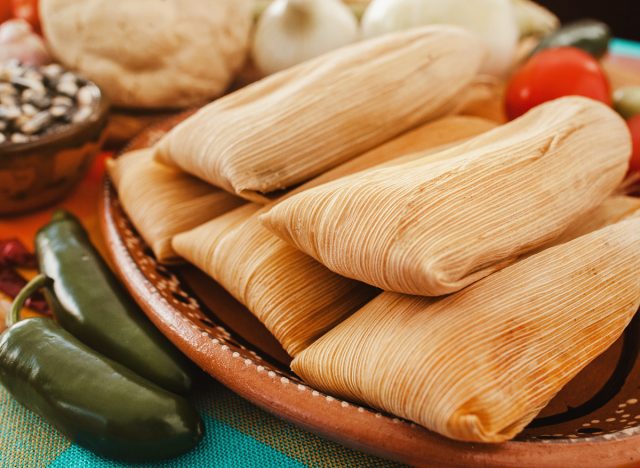

A traditional dish in Central America, South America, and some Caribbean Islands, tamales are labor-intensive and often reserved for the holiday season. “Tamales are the top food I warn clients about when the holiday season arrives. Tamales are made of a thick layer of dough smeared on either a corn leaf or a banana leaf, depending on the country of origin,” explains Garcia.
The issue with tamales is that they’re high in calories, and most people eat several at a time (especially over the holidays). Garcia adds, “Holiday gatherings will often have a variety of tamales. If consumed regularly over weeks, a person can quickly gain belly fat if not careful and conscious of the amount they’re eating.”
Source:






